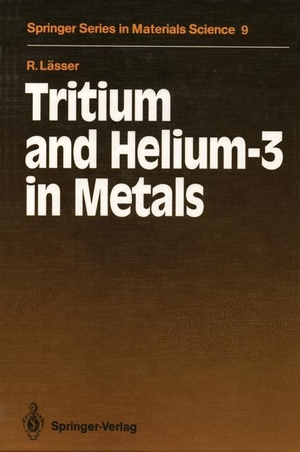Für statistische Zwecke und um bestmögliche Funktionalität zu bieten, speichert diese Website Cookies auf Ihrem Gerät. Das Speichern von Cookies kann in den Browser-Einstellungen deaktiviert werden. Wenn Sie die Website weiter nutzen, stimmen Sie der Verwendung von Cookies zu.
Cookie akzeptieren
Rainer Lässer
Tritium and Helium-3 in Metals
- Springer Berlin Heidelberg
- 2011
- Taschenbuch
- 172 Seiten
- ISBN 9783642735127
Hydrogen can behave as an alkaline metal or a halogen and can react with nearly all elements of the periodic table. This explains the large number of metal hydrides. Since T. Graham's first observation of the absorption of hydrogen in palladium in 1866 the behaviour of hydrogen in metals has been studied very extensively. The interest was motivated by the possible application of metal-hydrogen systems in new technologies (e.g., moderator material in nuclear fission reactors, reversible storage material for thermal energy and large amounts of hydrogen) and by the fact that metal hydrides show very exciting physical properties (e.g., superconductivity, quantum diffusion, order-disorder transitions, phase diagrams,
Mehr
Weniger
zzgl. Versand
in Kürze